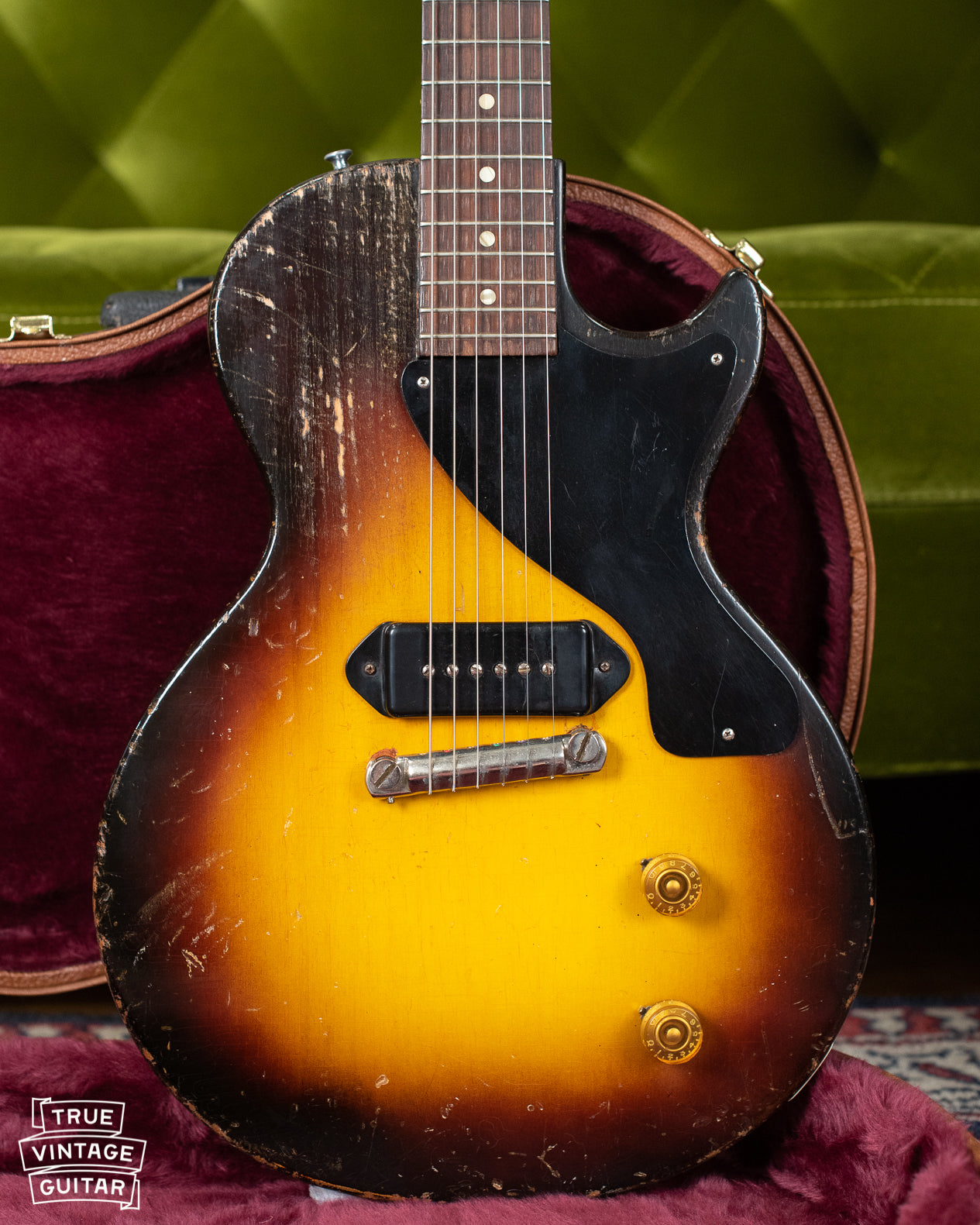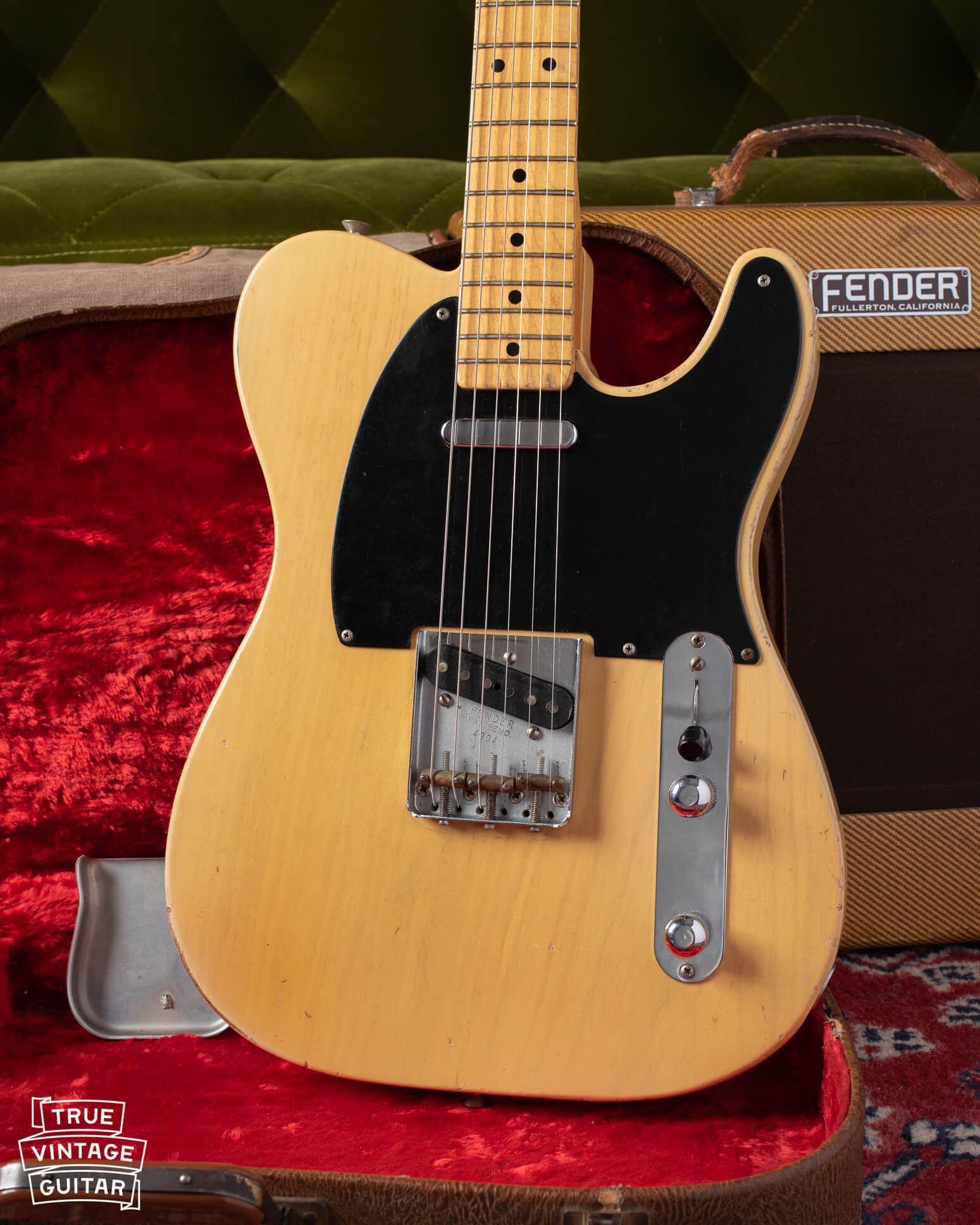This Gibson Les Paul Goldtop 1953 with Bigsby tailpiece is one of my favorite guitars to come through the shop recently. It sticks out as being one of best playing 1950s Gibson Les Paul Goldtops I've had. I'm always a Gibson guitar buyer but I'm especially looking for nice examples of Gibson Les Paul guitars from the 1950s and 1960s. You can contact me here to sell a Gibson guitar.
The Bigsby tailpiece on a Gibson Les Paul goldtop was a common modification to the guitars in the 1950s. The Gibson Les Paul goldtop 1953 pictured here appears to have had a gold anodized Bigsby B7 tailpiece installed behind the bridge in the late 1950s. It's a bit of a strange way to install a Bigsby where the strings wrap over top of the original bridge, but it was surprisingly stable and played very nicely. I loved playing this guitar.

How to date this Gibson Les Paul goldtop 1953
We can easily know how to date this Gibson Les Paul goldtop to 1953 based on its serial number, features, and potentiometer codes. Gibson Les Paul serial numbers in the 1950s have a number prefix indicating the year followed by four or five digits. These serial numbers are easily distinguished from 1960s serial numbers since the 1950s numbers are ink stamped but 60s serial numbers are impressed into the wood. The serial number on this Les Paul goldtop began with a 3 then was followed by a 2000 series number.
The features are also important to know how to date this Gibson Les Paul goldtop to 1953. We can see a gold finish with single piece wrap tail bridge, amber barrel style knobs, soap bar style center mounted P-90 pickups, and steeper neck pitch. The neck pitch on a '53 goldtop can vary wildly between early and late 1953, but I've found that the serial numbers 3_2xxx and above have all had the later style steeper neck pitch that allows for proper low action. All of these features will support the 1953 manufacturing year we found indicated by the serial number.
We can also use the potentiometer codes to help with how to date a Gibson Les Paul goldtop from the 1950s. I don't have a picture of the codes saved on this guitar but I believe they indicated early 1953. You can learn more about dating potentiometer codes here.
Gibson Les Paul Goldtop Values
Vintage Gibson Les Paul Goldtop guitar values can vary wildly based on the year they were made, condition, features, and originality. The value of a Gibson Les Paul increases from 1952 throughout the 1950s and peaks in 1958, 1959, and 1960. Gibson refined the Les Paul Standard model throughout the 1950s with the updated neck pitch in late 1953, combination tune-o-matic style bridge in 1955, humbucking pickups in 1957, then the Sunburst finish in 1958. Collectors and players alike generally prefer the updated specs of the later 1950s which increases demand for those guitars while the supply remains limited.
The condition, features, and originality also affect the value of a Gibson Les Paul goldtop significantly. The condition of this Gibson Les Paul Goldtop 1953 can be described as pretty good with heavy ambering of the clear lacquer. It doesn't have excessive greening, checking, or bumps or bruising. It features the later 1953 steep neck pitch which allows for low action and good playability. All parts are original to the guitar except for the Bigbsy B7 tailpiece which is a modification made a few years after it was made. Some buyers may prefer the original wrap tail bridge without the Bigbsy, but I personally loved the current set up.
If you're interested in learning more about the value of your Gibson Les Paul goldtop guitar then you can contact me here: Sell a Gibson guitar.




